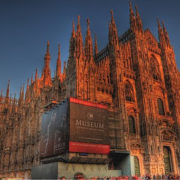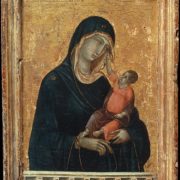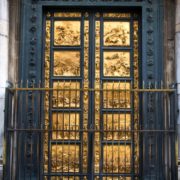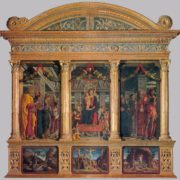Art and Advertising
Patrons of restoration and expansion projects at museums and churches are now taking full advantage of the benefits of sponsorship, turning important cultural and religious centers into commercial billboards for over-sized advertisements.
And the benefits are large. Hewlett Packard’s campaign on temporary construction walls at the London National Gallery occurred in 2004, when attendance levels were at 5 million for the year, up over 13% from the year before, not including the monumental foot traffic at Trafalgar Square. Similarly, Benetton sponsored the $70 million expansion of the Uffizi Gallery in Florence, which will double the exhibition space and raise the estimated number of daily visitors from 4500 to 7000, with the stated interest of surpassing the Louvre as the premier art institution in Europe. Enormous billboard installations accosted visitors exiting the museum with a Renaissance version of the brand’s famous “United Colors of Benetton” advertising campaign of the 1980s. Nor are churches immune from this commercialized treatment. Milan’s Duomo has been under restoration since 2003, and the reproduction of a watercolor by Jean-Michel Folon is now flanked by two large billboards advertising a bank. One observer re-named the building on a website blog, calling it the “Duomo di Banca Intesa”.










